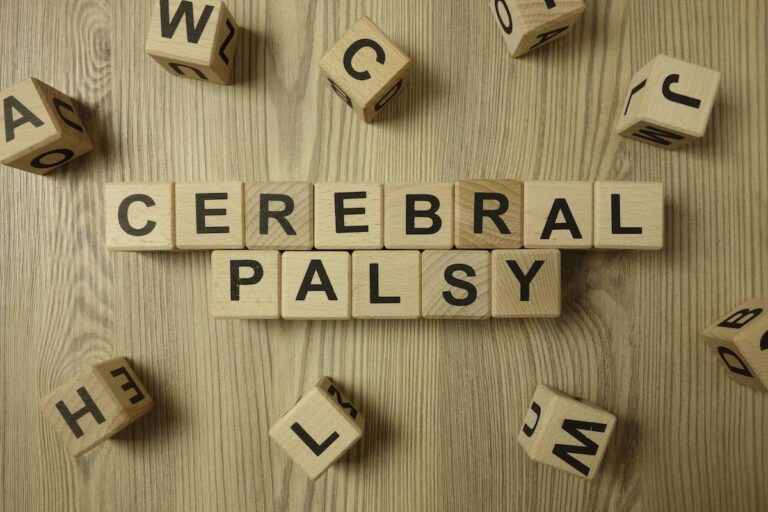
Call 24/7 for a FREE case evaluation
Call now (866) 393-4334

$100,000,000
in California case results
$20,000,000
in California jury verdicts
14
award-winning attorneys in network

Cerebral palsy is a serious condition that results from brain injuries before, during, or after the birth of a child. It can take many forms, and parents often worry about their children’s life span. It’s an understandable concern, but it’s also a difficult issue to address because CP varies so widely in severity and nature.
Life span refers to the projected lifespan of an individual or group of people based on specific characteristics or traits. The life expectancy for the average population in the United States, for instance, is 78.8 years. Many patients with mild cases of cerebral palsy can expect to enjoy a similar life expectancy. However, those with more severe cases might face shortened lifespans because of many factors, such as mobility, ability to communicate, and capacity for interacting with the environment.
People who suffer from severe conditions like cerebral palsy often have shorter life expediencies than the general population, especially when they suffer from co-occurring disorders or other factors that influence their health. For instance, some victims of this condition experience difficulty swallowing foods and beverages. They might not prove capable of opening their mouths, masticating food, or controlling the throat muscles.
Complications like this can reduce life span because they reduce quality of life and present nutritional difficulties. The CPA estimates that “[One] in 15 children with cerebral palsy are unable to take food through their mouth and need to be fed through a feeding tube.” Other complications include the inability to walk, grasp objects, or speak.
However, life span data doesn’t always prove accurate when you consider it on an individual basis. Even though statistics suggest that the general population will live 78 years, hundreds of thousands of people celebrate their 90th birthdays and beyond.
There’s little data to suggest average life expediencies. One study published by the National Institutes of Health suggests that people with severe cerebral palsy that affects “all four functional disability categories” have a 50 percent chance of living to age 13 and a 25 percent chance of living to age 30. This only refers to the most severe cases, however, and many people who suffer from CP live long, happy lives, even if they need care from family members or professional caregivers.
Numerous factors can impact an individual’s life span, and many people with CP battle more than one of these issues. Quality of medical care proves essential when increasing a patient’s projected lifespan and improving his or her quality of life.
Mobility limitations can vary significantly from one CP patient to another. Some people can walk normally or with minor gait abnormalities, which means they don’t have to rely on a wheelchair or other mobility device. They can get more exercise than immobile patients. As mentioned above, eating and swallowing difficulties can also impact life span because of nutritional issues as well as the danger choking.
For children who cannot move at all on their own, risk of pressure sores increases. These sores can become infected and contribute to discomfort and overall health. Additionally, some CP patients experience premature aging, which can shorten life span, and might suffer from weakened immune systems, making them more susceptible to infection.
If cerebral palsy includes some form of intellectual disability, life span can become abbreviated. Some patients with cerebral palsy have no cognitive impairment, while others demonstrate considerable intellectual delays and issues. Those who suffer from spastic quadriplegia have a 50 percent chance of cognitive impairment.
Additionally, cerebral palsy can inflict hearing, vision, and speech problems that might reduce quality of life. They can impact a patient’s emotional equilibrium and leave them in need of round-the-clock care, especially if they also suffer from mobility restrictions. For instance, a patient who can neither see nor walk would need help to accomplish even the smallest task.
In some CP patients, musculoskeletal disorders, such as hip dysplasia and scoliosis, can co-occur with cerebral palsy. These disorders impact mobility and can cause chronic pain, which might shorten life span projections. In some cases musculoskeletal disorders worsen over time, and they can contribute to other complications.
Additionally, some patients with CP experience chronic seizures. Brain trauma can increase an individual’s risk of seizures, and having a seizure increases the risk of a subsequent event. Medical professionals can treat chronic seizures, but these events can cause further brain injury and damage.
While several factors can increase or decrease the projected life span for an individual patient, medical intervention and parental involvement can help ease those complications and make them less pronounced. Quality of care becomes critical to comfort, longevity and improved symptoms.
Independence often serves as one of the leading issues related to treatment and care. If a patient can take care of him or herself, that patient becomes more self-sufficient and confident. Daily tasks like getting dressed, taking a bath and preparing a meal might not prove possible for some CP patients, while others accomplish them admirably.
Additionally, children with CP often need speech and language therapy. Some experience learning difficulties that might slow their progress, but with proper attention, many can overcome those obstacles and increase their learning potential. Furthermore, if they can communicate effectively with their caregivers, parents and medical professionals can more easily understand problems and find solutions.
More serious issues, like a patient’s ability to eat, drink and breathe autonomously, can have a more serious impact on life span. If a patient chronically aspirates food, saliva, beverages, or vomitus into the lungs, for instance, his or her risk for pneumonia and other pulmonary diseases increases. The chronic disease might shorten life expectancy as well as the quality of life.
Symptom and pain management becomes essential to increasing the life span for a patient who suffers from cerebral palsy. Modern medicine has produced numerous tools and therapies that medical professionals can use with great success. Assistive devices, for instance, can help CP patients become more autonomous and allow them to build muscle control and strength. Physical therapy teaches them how to operate within their environment and improve their motor skills.
The same goes for co-occuring disorders and other conditions that a CP patient might have. When physicians and caregivers work together to cover all of a patient’s needs, life span improves. Some physicians have even experienced success with surgical intervention in severe cases.
WE’RE OPEN NOW
Our staff are standing by to help you find the perfect attorney for your case.

Published: 16 May 2022